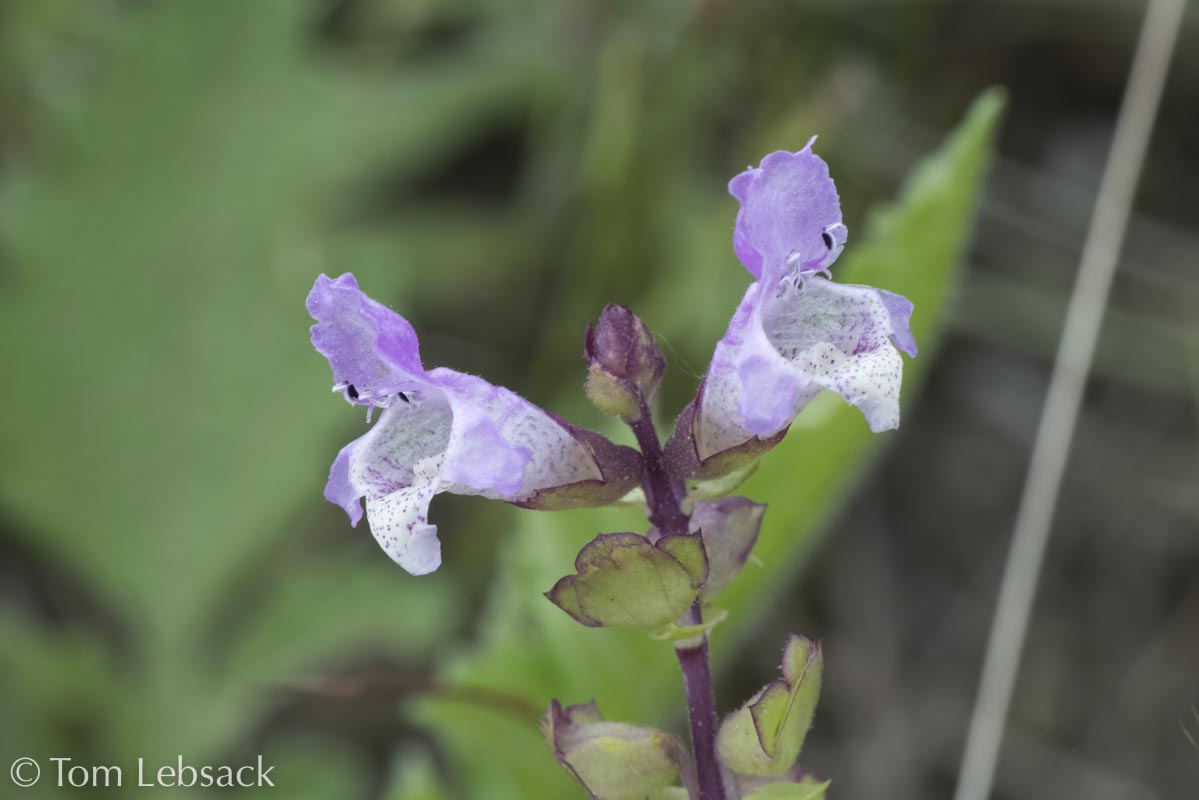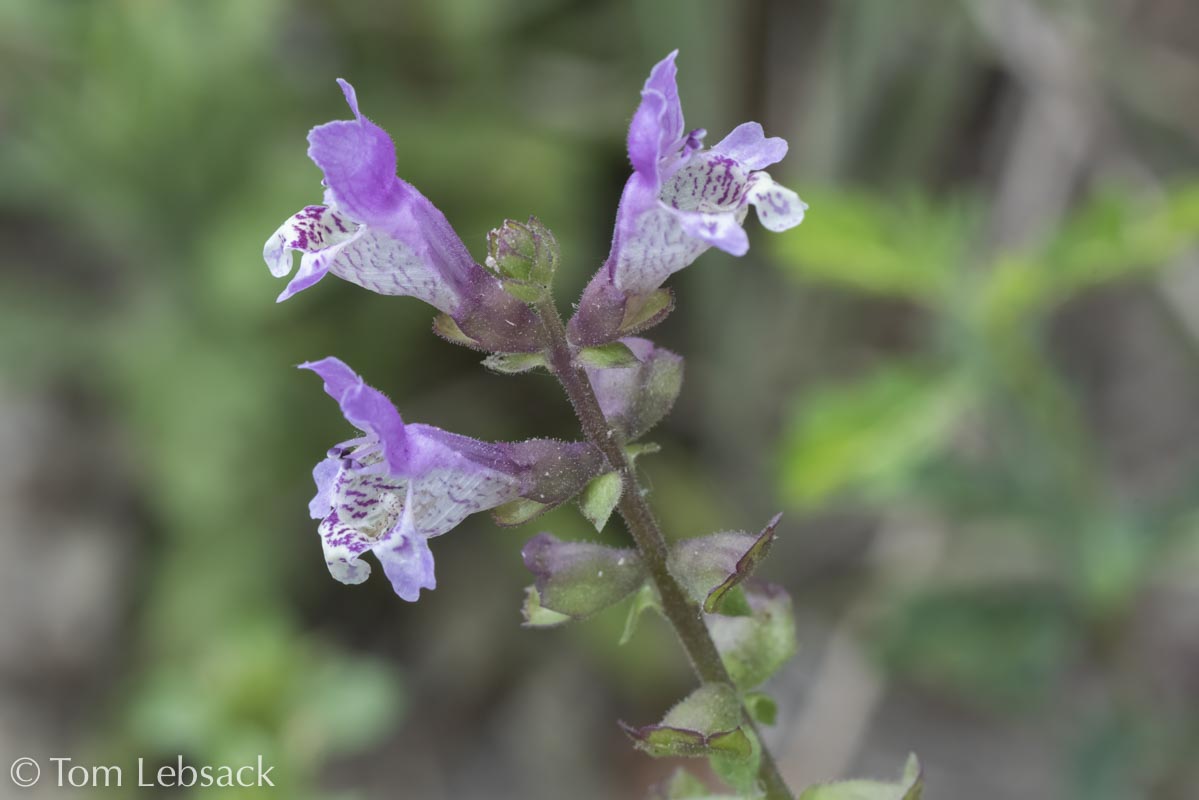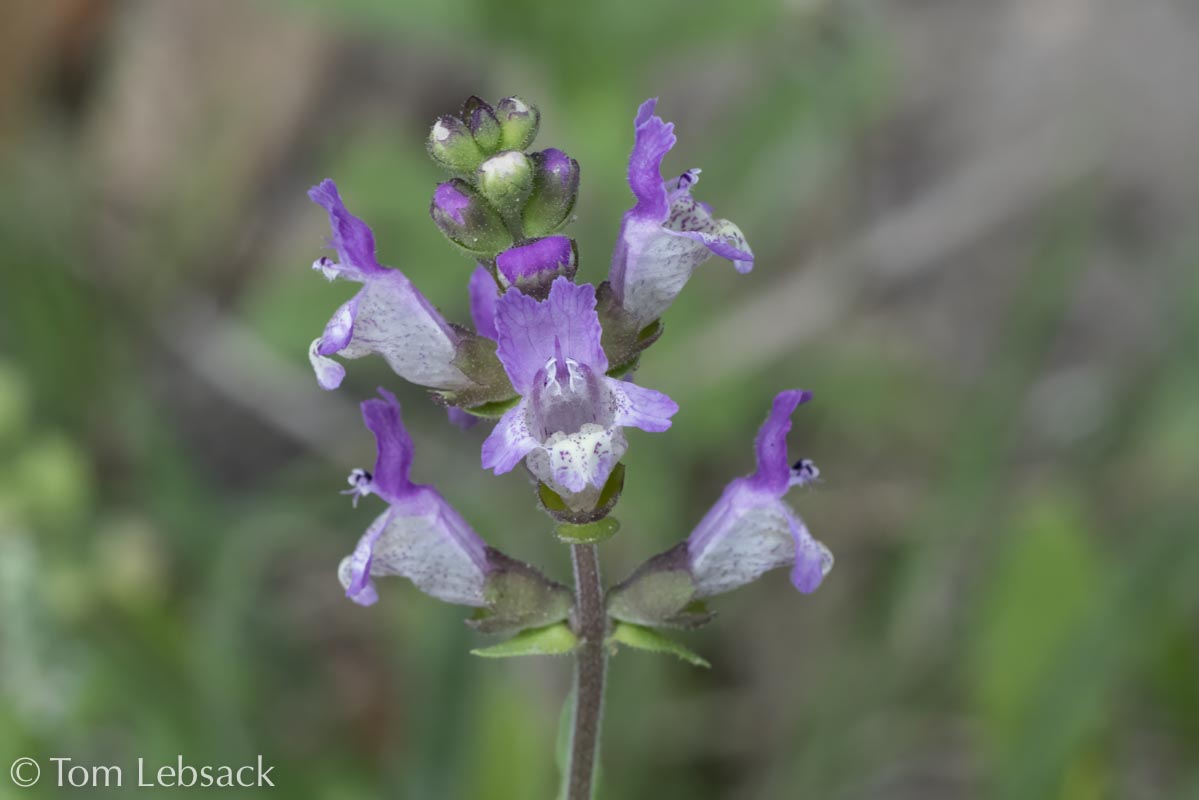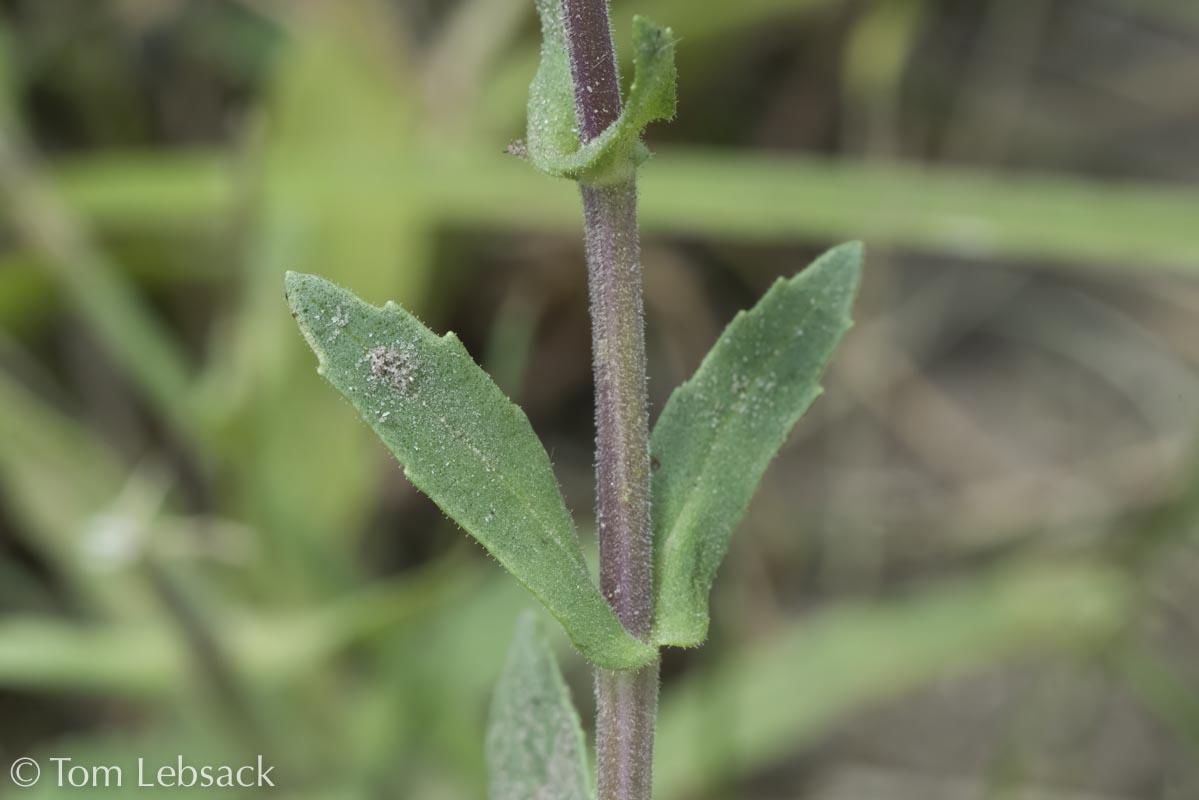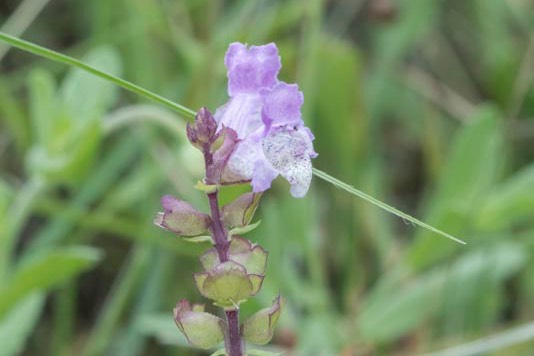Texas Wildbuds
Brazoria arenaria
(Sand Brazoria)
| Scientific Name | Brazoria arenaria | USDA PLANTS Symbol | BRAR |
| Common Name | Sand Brazoria | ITIS Taxonomic Serial No. | 32463 |
| Family | Lamiaceae (Mint) | SEINet Reference |
Click Here |
| Description | Habitat: Sandy soils; endemic to Rio Grande plains and coastal counties in South Texas. Plant: Upright annual up to 16 inches high; stem branching at base with short pubescent hairs. Leaves: Basal leaves oblong-elliptic to elliptic-oblanceolate, up to 4-3/4 inches long and 1-3/8 inches wide and on long petioles; a few stem leaves linear-oblong to oblong-lanceolate, sessile, becoming clasping, rounded tips and denticulate margins. Inflorescence: Raceme up to 12 inches high with multiple pale pink/lavender flowers, each with two lips, upper lip with two lobes and the lower with three; floral throats are white with purple dots; calyx tube has two lips, upper with three lobes and lower with two, with short glandular and non-glandular hairs; single elliptic to ovate-elliptic leaf-like bract below each head with ciliate margin and obtuse to acute tip. Bloom Period: March and April. References: "Manual of the Vascular Plants of Texas" by Correll and Johnston. Note: Previously mis-identified by me as B. truncata. Thanks to Joe Marcus at Lady Bird Johnson Widflower Center for the correction. |
BONAP Distribution Map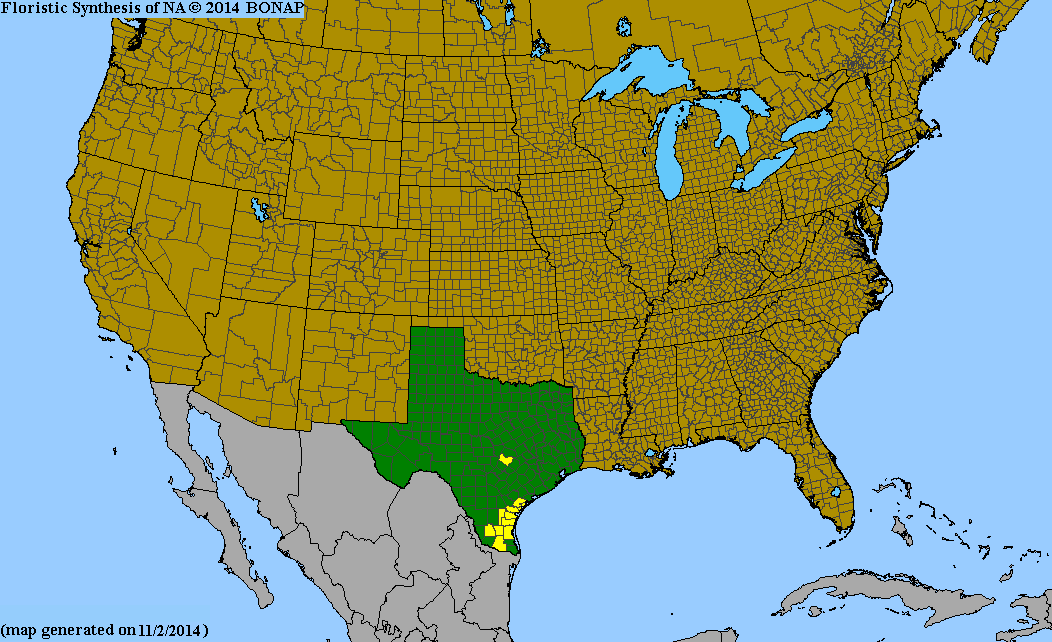 Map Color Key Map Color Key |
Texas Status: Native Endemic |
Banner photo of Castilleja indivisa and Lupinus ssp. taken along FM 1323 north of Johnson City, Blanco County
© Tom Lebsack 2025
Every attempt is made to provide accurate, up-to-date, and relevant information, but the completeness or accuracy of any information presented on this website cannot be guaranteed. I use authoritative references to insure high standards of accuracy and review and update the information frequently.
